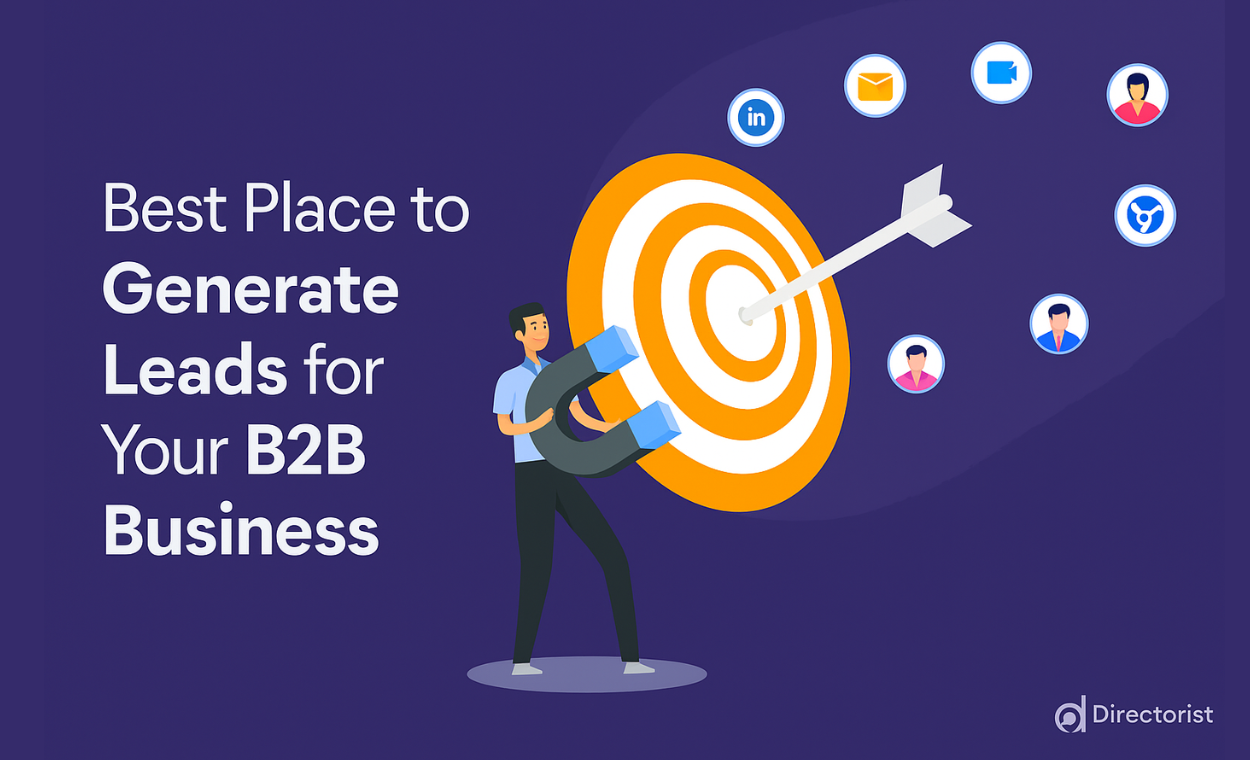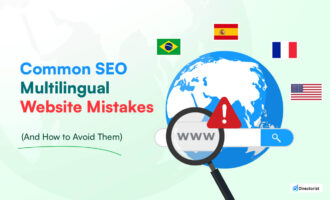Business Directory Sites: Best Place to Generate Leads for Your B2B Business
If you are running a B2B business, you know how important it is to generate leads. Whether you are using cold emails, cold outreach, cold calling, social media ads or navigating the streets to hunt down potential customers, you must build a solid B2B lead list in order to keep your sales funnel healthy and functional.
One particular place many entrepreneurs do not value much but can return a greater output. Today we will discuss one of the best source for lead generation for B2B business worldwide. That is none other than, Business Directories; the website that has all the local and international businesses listed based on their industry, niche and other decisive factors.
What are Directory Sites?
To elaborate, directory sites are online platforms that help searchers find the contact information of various companies in their niche. The idea behind it is somewhat similar to Yellow Pages. These sites also provide details about a variety of professionals such as lawyers, doctors, IT consultants, business advisors, etc. They also include valuable content enabling the users to learn more about the company and its services before making a purchase decision.
Although, directories are most used by individual consumers to find nearest local B2C service providers, B2B industries are also largely dependant on such platforms. We already discussed Yellow Pages but we did not discuss the Better Business Bureau (BBB), Clutch or DesignRush yet. On top of them, Yelp also has a rich lists of B2B businesses alongside B2C businesses that you can use for B2B lead generation.
One big question you may ask is, if they are so crucial, why can’t all B2B business thrive on this information? Why do they still need to do 15 other marketing activities like cold calling, email marketing, personal meeting, social media marketing etc. to close all deals?
The answer will come gradually when we deep dive into the best B2B lead generation tactics using business directories. So without further debate, let’s deep dive into the effective ways of lead generation for B2B business.
Lead Generation for B2B Business – How Business Directories Play a Vital Role
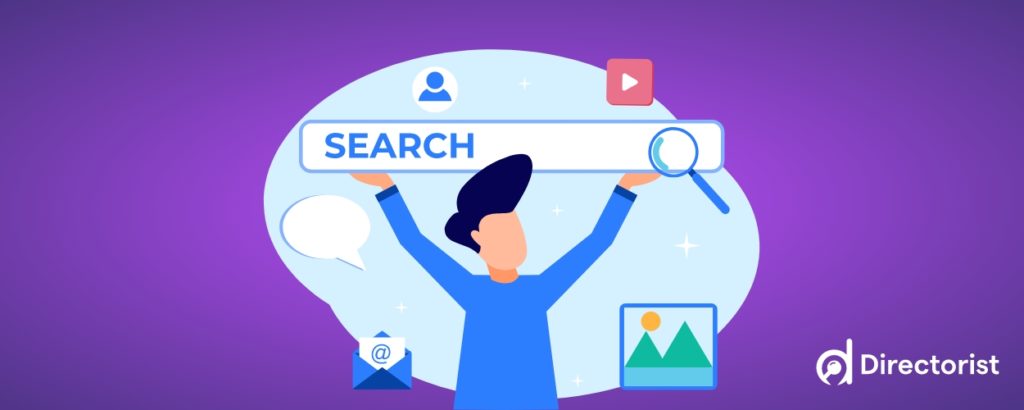
As business directory sites contain a vast database of businesses not only by name but also contact information such as helpline, email, mailing and official addresses, industry information and optionally owners name & profile, company’s age and customer size etc., they are an excellent hub for B2B lead generation.
Plus many directories guide users to locate businesses and services near them, helping them to uncover many organizations they may have never heard of before. For local business directories following are some of the common business listings; nearby restaurants, hotels, shops, dentists, auto repair shops, doctors, accountants, mortgage lenders, electricians, real estate agents, and many more.
Online directories are an excellent way to locate local businesses and discover new ones even though not listed on Google, Yahoo, or Bing. Long before Google My Business become this powerful, they were the best place to discover businesses. As a result, the credibility of those listings as well as the authenticity of information is unmatched till date.
However, only browsing through tons of listings and copy-pasting the contact information on a spreadsheet cannot be the entire B2B lead generation tactics. For this, you must have a checklist or methods sorted out. If you haven’t yet, we will be helping you in the following passages on how you can utilize business directories to build your high converting B2B lead list.
B2B lead generation tactics using Business Directories – The SOP

The SOP we are proposing to develop a high-converting B2B lead list may not be ideal for your business. This is why we encourage you to go through it and while picking ideas that fits your business needs, do not hesitate to make modifications for a more fruitful outcome. However, first few steps should be common for most businesses.
Phase 1: Define Your Ideal Customer Profile (ICP)
Before jumping on business directories you must have a crystal clear idea of who your ideal customers are. It’s better if you have a written profile or build on using internet resources. For example, Claude AI is a recommended resource for creating your Ideal Customer Profile (ICP). Make sure you include the following checklist in the prompt to get the best output.
Checklist:
- Industry/niche – that you want to target or aligns with your B2B product or service.
- Company size (revenue, team) – depending on your product/service pricing.
- Geographic location – In case you service has geographical constraints.
- Decision-maker roles – also dependant on your business offerings.
- Tech stack used – applicable only for technology-based B2B businesses.
- Pain points they might have – the particulars that you aim to solve.
- Additional – competitors that might already be working with them.
Phase 2: Choose the Right Directories
Don’t go after all directories but just the ones where your ICP is most likely to be listed.
Top Directories for Various Businesses
- Clutch / Goodfirms (for service-based B2Bs)
- G2 / Capterra (for SaaS or software vendors)
- YellowPages or Yelp (for local/regional businesses)
- Google Business Profiles (for location specific listings)
- Crunchbase (for startups/funded companies)
- Chamber of Commerce/Industry-specific directories
- Dun & Bradstreet (for Fortune 500 or top-tier companies)
Checklist:
- List 3 – 5 niche-relevant directories that has heavy listings of your ICP
- Verify the listings are well put by checking reviews and visitor data
- Check export options (CSV, scraping policies, API, etc.)
Phase 3: Extract and Organize Leads
Instead of just copy-pasting data into your B2B lead list, try extracting bulk leads or scrap using various tools. It will not only save time but also gather data that you may miss while doing manually.
Suggested Tools:
- PhantomBuster
- Herpa AI
- Webscraper.io (Chrome extension)
Data to Collect:
You must collect the following data beside any other additional one for B2B lead generation success.
- Business name
- Website
- Industry
- Contact name & role
- Email (validated)
- Phone number (if needed)
- Social profiles (LinkedIn preferably)
- Notes on listing (rating, reviews, keywords)
Pro Tip: Validate emails using tools like NeverBounce, or Bouncer.
Phase 4: Clean and Qualify the Data
First thing to understand, not every lead is worth pursuing. Before starting to outreach, you must refine your B2B lead list. Plus while scraping data from multiple directories, you must have extracted many duplicate data which needs to be sorted.
Checklist:
- Remove duplicates – make sure that you do not waste time chasing same lead twice or even more.
- Verify company is still active – many listings are outdated and directories have not kept records properly.
- Confirm it matches your ICP – Although you choose suitable directories, still there are leads which many not quality as your ICP.
- Tag by priority: High / Medium / Low – not all leads qualify in the same bracket. Set low hanging fruits as high priority if you want quick gain and vice-verca.
- Segment by role, company size, industry – segmentation gives you knowledge on how to handle which lead.

Phase 5: Enrich & Personalize the List
Only refining the lead list does not make it enriched. You must add more information that you will need to succeed. Such information are typically not available on directories but there are tools that can help you personalize your lead list.
Enrichment Tips:
- Add LinkedIn profile of your contact person to the list.
- Review recent news or press mentions that you can use as your conversation hook.
- Depth report of products/services they offer. Without knowledge of their product or service, gaining the trust will be difficult.
- Check testimonials or reviews. This will give you idea on where they are lacking or falling behind or what their strengths are.
For prospecting precision, use tools like:
- LinkedIn Sales Navigator – the gold standard of B2B lead generation and validation tools.
- Apollo
- Rocket Reach
Phase 6: Outreach Preparation
You are almost there with your high-converting B2B lead list. Just need a short preparation before you jump onto outreach process.
Checklist:
- Pick your communication channel – Phone call, Emails, LinkedIn InMail or Old school physical visit (Depending on ICP)
- Craft your sales copy and align your offerings with their pain points – best to have them written even if you deliver over an oral conversation.
- Set up CRM (HubSpot, Pipedrive, etc.) – if you have one. If not, at least connect the spreadsheet to Zapier or similar tools to automate status update, follow-up scheduling.
- Warm up email domain (if cold emailing)
- Setup the IP phone number making sure that it remains reachable if the leads contact you back.
Phase 7: Launch Outreach Campaign
Now that your high-converting B2B lead list is enriched and your outreach preparations are done, jump onto outreach with the channels that you picked on phase 6.
Checklist:
- Start with small batches (25–50 leads) – Don’t send bulk emails to thousand emails at once. Not only it will be considered spam but also the recipients will get overwhelmed seeing a template with thousands on TO/CC.
- Track replies, opens, and link clicks – While sending emails or making calls to fewer leads at once, track the replies, email opens, check link clicks or their response to your LinkedIn message.
- Follow up (2–4 times max) – this is crucial for B2B sales success. High-converting not necessarily means they all will convert in the first touch but consistent and measure follow-up will pave your way to success.
- Tag status: Opened / Replied / Interested / Not Interested / Unsubscribed – Keep your B2B lead list updated with such tags. It will also help you in following up as well as abandon the ones that will not convert, saving both your time and effort.
Phase 8: Measure & Optimize
You are almost done on the SOP at phase 7 but we added this additional phase for your lead generation success measurement.
Checklist:
- Monitor conversion metrics (reply rate, booked calls)
- Tweak your ICP if needed based on various findings.
- Refine messaging based on replies to make sure that your leads feel personalization.
- Automate lead scraping using various tools to keep enriching the list.
This is not the end. But rather you have got yourself a continuation SOP that you can follow as well as train your team members to grow B2B lead list in a similar way.
Get Listed to gain leads – the Inbound Approach
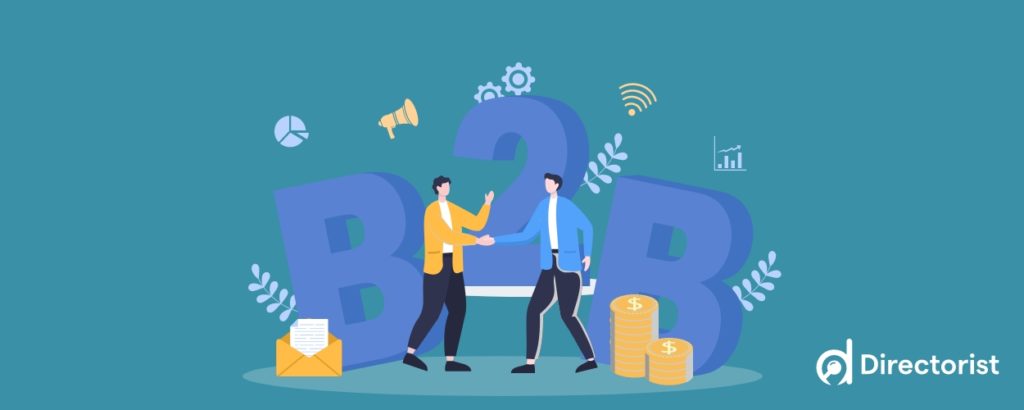
Directory sites not only lists potential customers you can reach out but also offer ways for businesses to contact you for service or consultancy. This is an inbound marketing approach that popular service based listing websites have in-built. As you are developing a high-converting B2B lead list, you may want to get advantages of such features to earn more qualified leads.
Online directories are known for their high-quality content and search engine optimization (SEO). When done correctly, these can be the best way to promote your business. These can also be a huge source of traffic as well as a rich B2B lead list. So you ought to get listed as well in relevant business directories if you want to get potential clients from over there.
It’s an straightforward approach but there must be some steps you should take carefully. Otherwise, it will turn into just another listing with thousands of spammy emails in your inbox but zero fruitful leads that you can cater. Here are a few pro tips you should consider while getting listed on a business directory to keep enriching your B2B lead list.
1. Identify the right Directory to get listed
This one is not same as finding directories with your ICP. If you are working with Digital Marketing services and your ideal customer belong to real estate, you may scrap data from a real estate directory but you ought to get listed in directories that has all agencies working on Digital Marketing. Many businesses seeking digital marketing services can find you from their and get in touch and helping your B2B lead generation process.
For the aforementioned service; Clutch, Goodfirms, Agency spotter or DesignRush are the popular choices. You can also get listed on generic websites like TrustPilot or BBB but the opportunities will be limited there.
2. Prepare your Company information
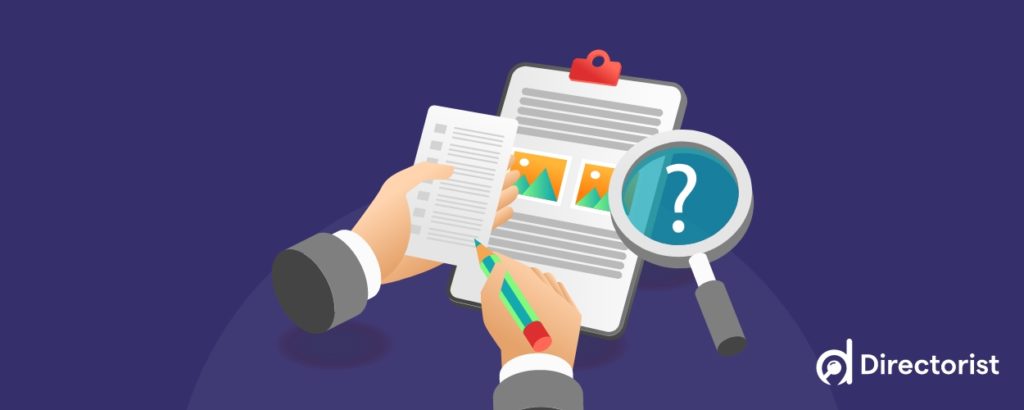
Getting listed on directories is not as simple or straightforward as they seem. Because of the listing structures, different websites will require different information that you will need to display. Plus, for a solid visibility, you need to write company descriptions, titles and use tags in a smart way. So you better be prepared with clear, concise but highly engaging information to put out there.
The best suggestion is to write your company description in a document first and then copy-paste them to those listing websites. While putting out such information, make sure that they contain what you offer, what your values are and your achievements in the most fitting manner. It’s not like you cannot modify them later but the best approach is do it right at the first approach.
3. Utilize the contact options
Various business directories and listing websites offer various contact options. While many allows the businesses to place their own contact form link on listings or emails to display, some only allows to contact through their platform. Either way, you should be prepared to get hold of high-value B2B lead lists. When your ideal customer profile approaches you using those platforms, make sure that you are available in every touchpoints to serve them.
Common mistakes many businesses do is ignore the incoming emails from those listing websites thinking them worthless. Truth is, many of them might contain leads you are desperately seeking. Your cash-cow is coming to you with a requirement and you haven’t even checked their query, what can be worse than that? Even without making a single conversation, you are earning negative impressions. So be aware of that.
4. Purchase plans if required
Almost all popular listing websites has various subscription plans for B2B clients. They ensure that you get the best out of their traffic and to utilize that, they will charge you which is obvious if they can guarantee that the investment will return to you in form of revenue growth.
While making decisions to purchase subscription plans, be sure that the offering on that plans benefit you in the best possible way. Do not hesitate to talk to them or have detailed email conversation before making financial decision. Also evaluate your ROI potentials by analyzing the trends of other businesses benefitting from these listings.
5. Collect reviews from clients
Finally, keep your reputation on display by encouraging your existing clients to share reviews and ratings on your listings. It ideally doesn’t take long for anyone to write a few sentence review but means a lot for other potential leads. However, most your clients may not want to put out honest reviews for nothing. Having said that, you may want to incentivize your existing clients for sharing review encouraging them to take the time and effort as well as grow your reputation at scale.
6. Get featured for growth
Besides regular premium plan, the listing platforms also often feature listing options where the platform recommends specific businesses as featured for the right audience. This is another great way to build trust and strengthen your B2B lead generation process. The ideal suggestion is talk to platforms, make payments if needed or contribute the way they want to get featured on their platforms.
7. Attend to Queries
Listing and directory websites are also forum like platforms where potential customers can ask questions regarding your business. If you have question answer sections enabled, be sure that you are also attending to the queries you receive on your listing.
Specifically if you are a paid and/or featured business, it is highly likely that your potential audience will ask queries on your listings. Instead of referring them to contact personally, try to reply on your listings. This way, other visitors will have their questions answered resulting in more B2B lead list enrichment.
Final Thoughts
Your B2B business will thrive on leads and the best leads are just in front of your eyes. If you want to use the publicly available data to your great strength, be sure to have your business listed as well as collect leads from directories. However, it’s not just scraping and exporting, there are many more to do with them to succeed in B2B lead generation.
We suggest you to keep working on your B2B business lead generation tactics focusing on the directories and classified listings. When done right, they will bring the best output for your business and impact both your revenue and profitability in the long run.
If you are a directory owner who wants to create a smart B2B business funnel on your website, we also have ideas for you. Stay tuned as we will uncover them very soon.


